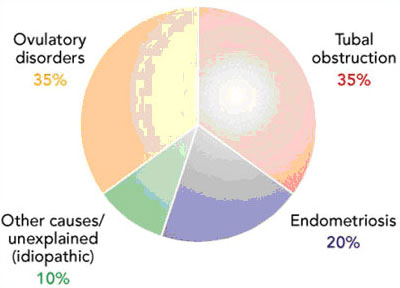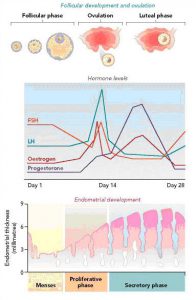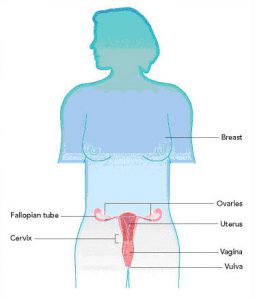Infertility: An Introduction Causes of Infertility
If you are concerned about your fertility, the first thing for you to know is that you are not alone. According to the World Health Organisation (WHO), about 15% of couples of childbearing age seek medical help for infertility, usually after about two years of failing to conceive.
The problem can stem from both female and male issues. Generally speaking, the source of infertility is:
- Exclusively with the female in about 30 – 40% of cases.
- Exclusively with the male in about 10 – 30% of cases.
- A combination of both partners having detectable abnormalities in 15 – 30% of cases.
- Percentage incidence of causes of infertility
After medical examinations, the causes of infertility remain unexplained in only 5-10% of couples.
WHO believes that there are around 60-80 million infertile couples in the world.
This may come as no real consolation (but may help put the situation in some context) – becoming pregnant is not that easy, even for people who do not have fertility problems! It’s a little known fact that humans are one of the least fertile creatures on earth. There is only a fairly short time within the menstrual cycle when conception is possible, making the chances of conception only 25% each month. It is estimated that 10% of normally fertile couples fail to conceive within their first year of attempt and 5% after two years.
Between 2 and 10% of couples worldwide are unable to conceive a child and a further 10 – 25% experience secondary infertility, in other words, they are unable to conceive a second or subsequent child.
Infertility in Females
The causes of infertility in Females
Let’s take a look at the causes of infertility in women, which can take many forms.
One area that lies at the root of a range of causes is age, and we’ll address that broad issue separately here: Impact of Age.
However, the direct underlying causes of female infertility fall into four main categories:
- Ovulatory or Hormonal disorders
- Anatomical disorders
- Chromosomal disorders
- Other causes/unexplained (idiopathic)
Failure of ovulation is the single most common cause of infertility in females. Over 40% of women who are infertile have ovulatory problems. The normal ovarian cycle is so complex that even small deviations may disrupt the cycle and prevent ovulation. However, with modern treatment there is a very good chance that pregnancy will eventually be achieved in these women.
Before considering the reasons for dysfunction or failure of ovulation, it is important to review the physiology of the normal ovarian cycle.
The normal cycle is under the control of the pituitary hormones, FSH (follicle stimulating hormone) and LH (luteinising hormone). The secretion of these hormones is influenced by GnRH (gonadotropin-releasing hormone) from the hypothalamus, and by circulating levels of oestrogen and progesterone.
A summary of the main stages of the ovarian cycle is shown below and is discussed in detail in Understanding Infertility.
Ovulatory disorders are most often caused by deficiency in one of the controlling hormones. However, problems can also arise if the ovaries themselves are resistant to normal levels of hormones. In addition, absent, damaged or diseased ovaries will prevent ovulation.
The issue of Ovulatory disorders is broad and complex, so we’ve broken it down into some key areas for you:
- WHO Classification of Ovulatory Disorders
- Clinical features of Ovulatory Disorders
- Possible underlying causes of Ovulatory Disorders
- Irregularities in the Menstrual Cycle
- PCOD (Polycystic Ovary Disease)
- Inadequate Luteal Phase
- Prolactin Disorders
Disorders of the female reproductive system
Disorders of the female sex organs are much more common than those of the male. This is especially true of infection and inflammatory conditions. Due to its anatomy, the female genital tract is more vulnerable to pathogens than the male tract.
Chromosomal Disorders
Infertility can arise in disorders where there is an abnormal number of sex chromosomes. For example, a missing X chromosome results in a condition known as Turner’s syndrome, which affects females only.
Approximately one in every 3,000 girls is born with this syndrome. The main features include shortness of stature, absence or very retarded development of secondary sexual characteristics. These people are unmistakably female in appearance and identity, although full female sexual characteristics never develop.
Menstruation can be induced by oestrogen drugs, but sufferers continue to be infertile.
Other Causes (Idiopathic)
Cervical problems are a relatively uncommon cause of infertility. They may include:
- Inadequate cervical mucus : may be caused by poor oestrogen stimulation or poorly functioning endocervical cells. One of the treatment options for inadequate cervical mucus is gonadotropin therapy.
- Mucus hostility : in which normal sperm fails to penetrate the cervical mucus. Mucus hostility may arise as a result of intravaginal infections or due to the presence of antisperm antibodies in the mucus (which are also commonly a result of treatment). It is also possible for the male to develop antibodies against his own sperm. Treatment of both partners with antibiotic/antifungal agents may eliminate the problem. Where this fails, these patients can be treated by intrauterine insemination (IUI), in which sperm are introduced directly into the uterus so bypassing the abnormal cervix. (See Treatment section of this site)
Unexplained infertility is defined as failure to conceive after one year, even though the cycle is normal, semen is normal, laparoscopic findings are normal and there is normal sperm-mucus penetration. In about 10-15% of couples, a cause for infertility may not be found even after thorough investigation of both partners.
The results of empirical hormonal treatment have been encouraging in some female patients whose infertility is undiagnosed after thorough investigation.
In women, unlike men, fertility declines with age from the age of about 35 years. Clinical subfertility, defined as delay in conception of more than 12 months, is therefore closely associated with increasing age.
Other lifestyle factors such as diet, exercise, alcohol and use of prescribed or illegal drugs may influence fertility, but their importance is uncertain.
Infertility in Males
Infertility : What Every Man Should Know
Difficulty conceiving a child comes as a surprise to most couples. Many have no medical history to suggest a fertility problem, and may, in fact, have spent years trying to prevent pregnancy. They assume that once birth control is stopped, conception will soon follow. While this is true for many couples, others discover that having a baby is not as simple as they expected.
Infertility is just as likely to be related to male factors as female factors.
Potential male factors are described throughout this section of the site. Whatever the cause, coping with infertility is never easy. Many men feel robbed of their virility when they discover a fertility problem, and some struggle with feelings of poor self-esteem. These responses are normal. The key to overcoming them is mutual support within a primary relationship. Whether difficulty conceiving is related to male factors, female factors, or both, infertility is a couple’s shared challenge.
About 85% to 90% of infertility can be treated with conventional therapies, such as medication or surgery. Success rates are continually improving. Use the information in this section of Fertility.com as a starting point for talking to your doctor about the best course of action for you.
Before we consider the causes of male infertility, let’s take a look at a couple of important considerations relating to sperm:
- Sperm Creation
- Sperm Quality
Sperm Disorders
The major cause of male infertility is failure to produce enough healthy sperm. Azoospermia (complete absence of sperm in the semen) and oligospermia (in which too few sperm are produced) both cause infertility.
It is important to note here that, although only one sperm is required for fertilisation, enzymes from many sperms are required to break down the protective tissues around the ovum and so allow the fertilising sperm to penetrate into the cytoplasm of the ovum.
Anatomical Causes
There’s a considerable range of anatomical causes of male infertility. Here are some of the major causes, including environmental factors can that impact upon the anatomy.
- Retrograde Ejaculation
- Varicose Veins (Varicocele)
- Testicular Cancer
- Undescended Testis
- Environment & Lifestyle
- Unexplained Infertility (Idiopathic)
- Age Associated Concerns
- Impotence
We don’t need to tell you that, for most couples, infertility is more than just a physical condition. A diagnosis of infertility often carries intense emotional and social burdens as well. Infertile couples commonly experience anger and frustration, a sense of a loss of control, isolation from friends and family, depression, and grief. These emotions may at times seem overwhelming – and the inevitable outcome is stress.
That’s why you are here – and that’s where we can help. Here we outline some of the common experiences and issues encountered by couples coming to terms with their infertility, and ways to help you cope.
We hope that exploring these experiences will help you in coping with your own feelings and in coming to a resolution that is right for you.
Please bear in mind that this advice is not meant to substitute for professional medical advice, diagnosis or treatment. As always, you should make decisions regarding your healthcare in consultation with a physician who understands your specific situation.
The Doctor’s Visit
You must remember, as you prepare to see a fertility specialist, that total infertility is rare and the inability to conceive is generally the result of some degree of ‘sub-fertility’.
Infertility can often be overcome, and it is therefore important that you seek the advice of a fertility specialist as soon as possible.
Today, there is a wide range of treatment available to infertile couples: from hormonal therapy, donor insemination and Artificial Reproductive Technology (ART) through to microsurgery and laser surgery.
Correct diagnosis is a crucial step in determining the appropriate therapy, and a variety of procedures can be used, ranging from simple blood tests to more complicated analytical methods.
Couples Evaluation
A fertility specialist, when evaluating a couple, is endeavouring to determine which of the four essential conditions required for pregnancy are not functioning correctly.
These four essential conditions are:
- A healthy mature female egg (female ovocyte or gamete).
- Normal motile male sperm (male gamete or spermatozoa).
- The ability of the reproductive tract (uterus and fallopian tubes) to allow them to meet and fertilize.
- The appropriate hormonal setting to allow egg and sperm development and support.
The female exam consists of a general physical exam, breast exam, and comprehensive pelvic exam.
During the pelvic exam, the specialist determines the size, shape and position of your reproductive organs. This may include a pelvic ultrasound.
Many doctors do a routine Pap test to rule out cervical cancer and detect infection. Many also test for immunity to rubella (German measles) and will vaccinate you if you are not immune.
The investigation of infertility in the male is often simpler than in the female – the male sexual organs are located outside the body and in most cases, sperm samples are easily obtained. However, the causes of male infertility are usually more difficult to diagnose.
As in females, the specific tests administered to males are determined based on findings during the medical history and physical examination. A semen analysis is the first test for males in most cases, and additional procedures may then be scheduled based on the findings.



